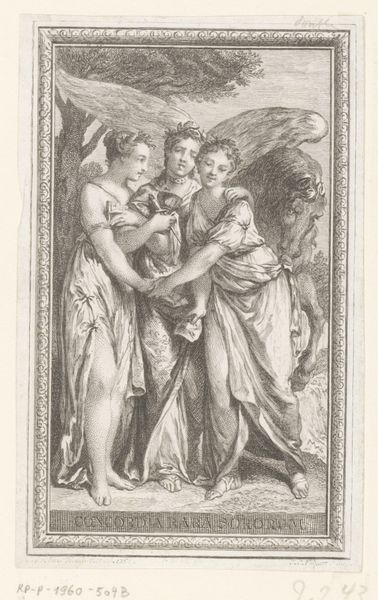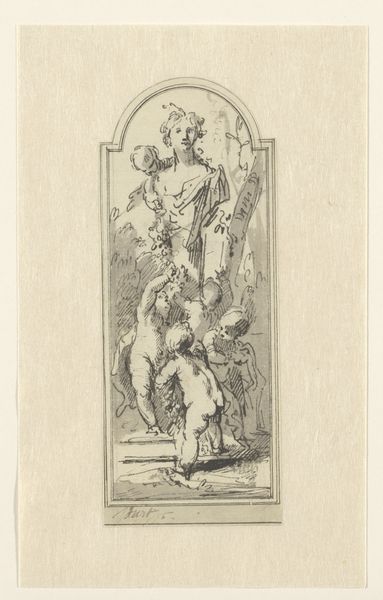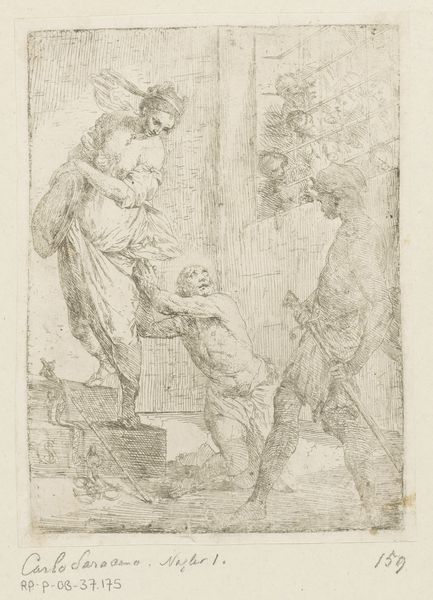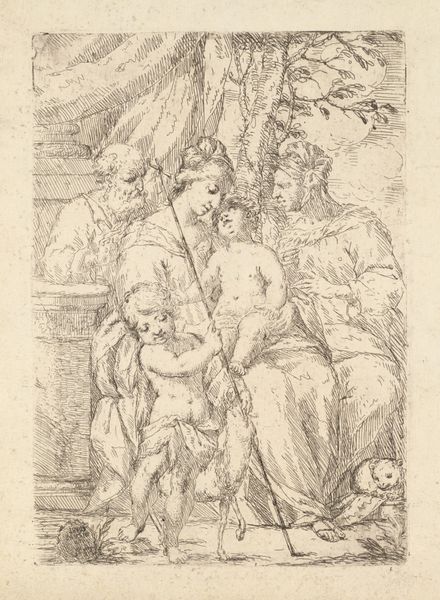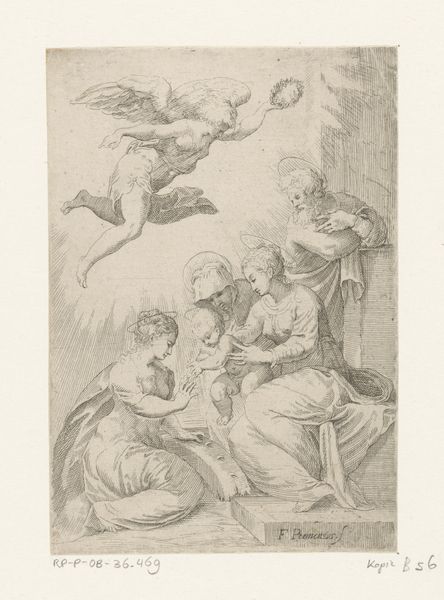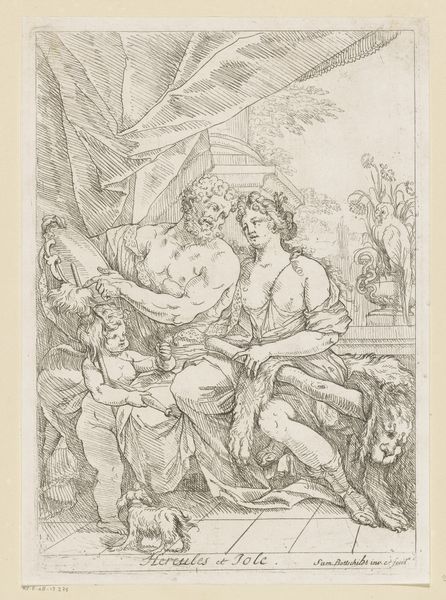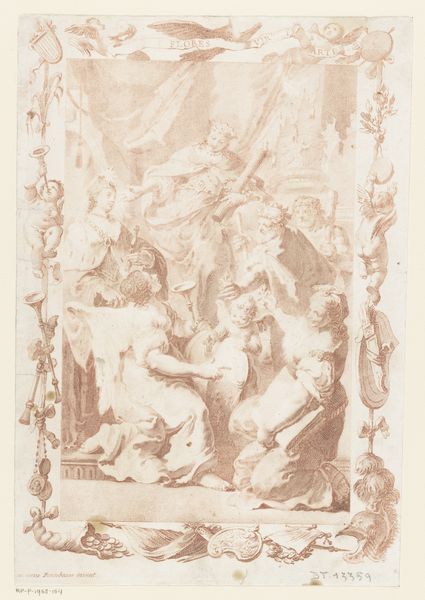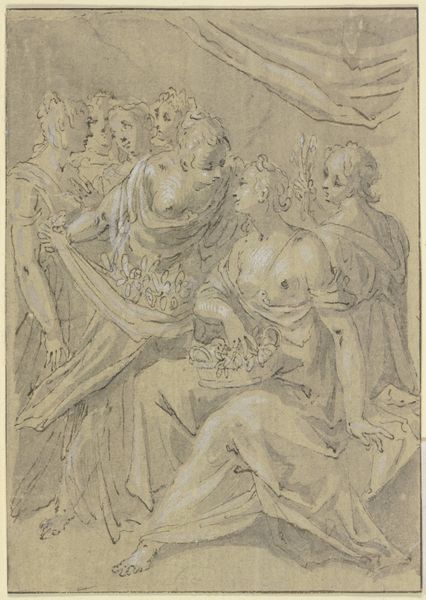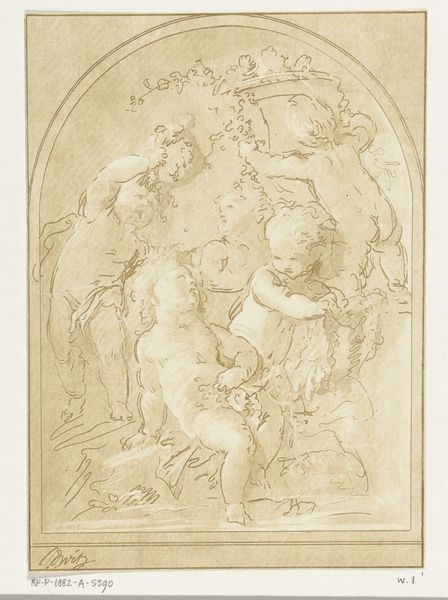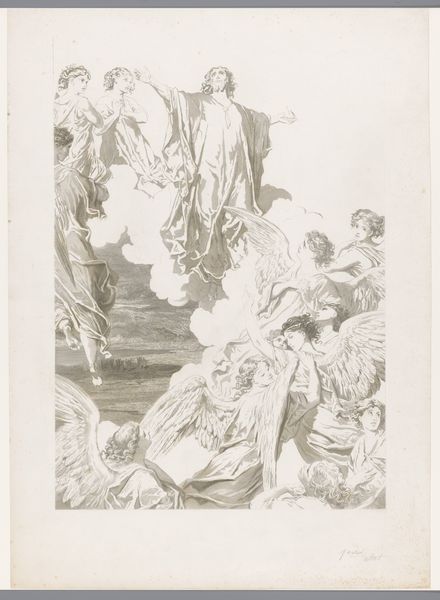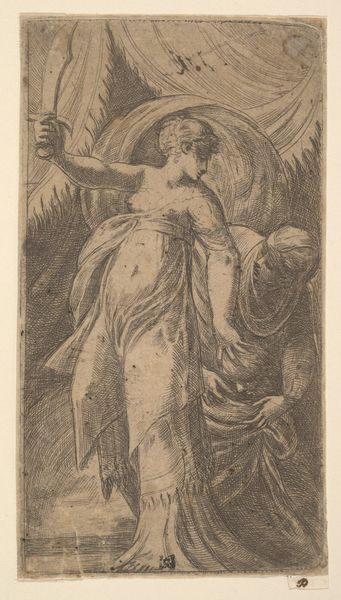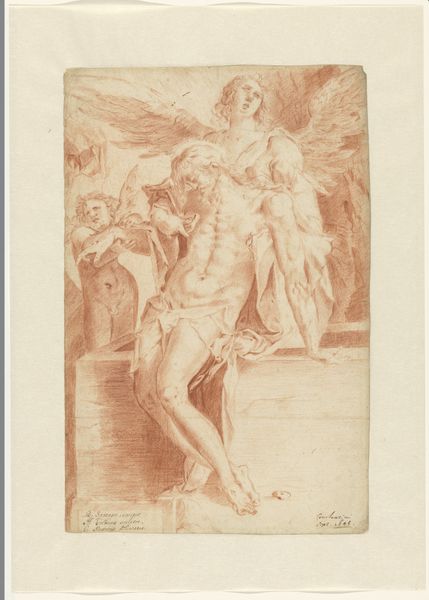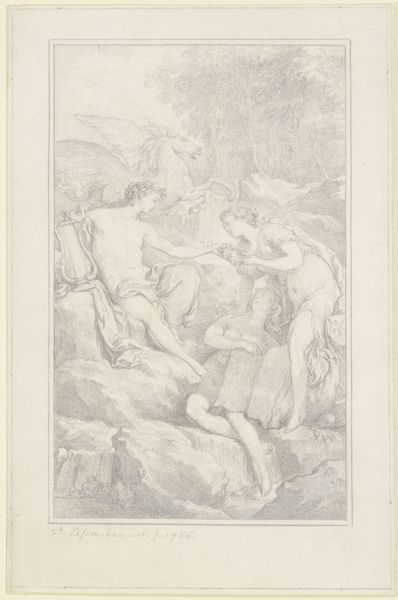
Vignet met drie allegorische vrouwelijke figuren en Pegasus 1758
0:00
0:00
print, engraving
#
allegory
#
baroque
# print
#
figuration
#
engraving
Dimensions: height 146 mm, width 89 mm
Copyright: Rijks Museum: Open Domain
Editor: This is "Vignet met drie allegorische vrouwelijke figuren en Pegasus," an engraving from 1758 by Jean Jacques Flipart, housed at the Rijksmuseum. It strikes me as dreamlike, almost ethereal. What story do you think Flipart is trying to tell here? Curator: Oh, isn't it lovely? It whispers of hidden meanings, doesn't it? These allegorical figures, they aren't just pretty faces; they’re fragments of a larger myth. Flipart gives us just enough to tantalize, to nudge our imaginations. Notice how the lines seem to float, almost like thoughts themselves. Baroque art often reveled in symbolism – what figures do you notice first? Editor: Definitely the three women. And the winged horse, Pegasus, behind them. Are they muses, perhaps? Curator: Perhaps! Or Graces... goddesses. See how they are intertwined in a dance with that magical Pegasus, a symbol of poetic inspiration? It makes me think of half-remembered dreams, snippets of classical poetry struggling to surface. The Baroque loved a good flourish, but even more, it loved hinting at the secrets of the universe. What do *you* think they are whispering about? Editor: That’s beautiful! Now, when I look closer at Pegasus, his form looks quite vague and almost lion-like to me. Was it normal for depictions of the horse in that period to look that way, or is this simply due to the print being an early pull of some sort? Curator: You've got such keen observation, I almost think you possess Pegasus' eye! That form does appear aged, maybe due to its historical journey in that period's interpretation of Pegasus. You could investigate and propose some new theory, too, though - in art historical study there aren't that many truly definitive "facts." Editor: That makes me see it in a new light, kind of gives permission to interpret in the here-and-now rather than feeling tied to the past. Thanks so much! Curator: Anytime, my dear. Never forget, art history's less about answers, more about *how* you question them!
Comments
No comments
Be the first to comment and join the conversation on the ultimate creative platform.
